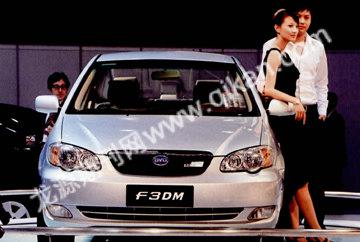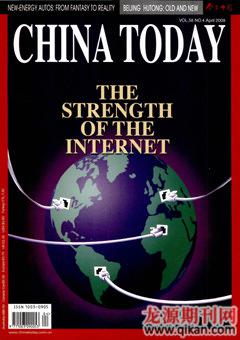New-Energy Autos:From Fantasy to Reality
By ZHANG WENWEN

The 2008 Olympic Games turned out to be a showcase for Chinas new technologies and products, such as the 598 new-energy automobiles (hybrid, fuel/cell and full-electric vehicles) that served the sporting event, receiving a positive response for their excellent performance.
So far approximately 30 Chinese automakers have launched more than 70 models of new-energy sedans and coaches, but all have suffered flat sales. According to the China Association of Automobile Manufacturers, 366 new-energy automobiles were sold in the first half of 2008, a 108 percent rise over the same period of the previous year, but still a paltry number.
Many predict a turnaround in the sector in 2009. The escalating global financial crisis will drive customers to be more cost-vigilant, and the new fuel tax, which came into effect on January 1, is believed to be a strong incentive for energy saving products. However, the results are yet to be seen.
Domestic New Energy Players
In September 2008 the Mid American Energy Holdings Company, a branch of Berkshire Hathaway Inc., bought a 10 percent stake in BYD, a private hi-tech corporation founded in 1995, beefing up the companys financial muscle and business prestige.
In response to inquiries about the size of the investment, worth HK $1.8 billion, BYD President Wang Chuanfu replied bluntly: “Our core technologies are worth hundreds of billons, or one trillion yuan, for they can yield a good variety of innovative products. Boss Warren Buffett is well aware of this.”
At the heart of these core technologies is the “BYD Fe battery.” The company actually started as a battery producer, and did not shift to auto manufacturing until 2003. But its battery expertise gave it a sharp edge in car-making. In December 2008 it marketed the worlds first mass produced plug-in hybrid F3DM, priced at a modest RMB 149,800, carving a niche for the company in the clean-energy automobile arena.
International research on alternative energy resources has been proceeding since the oil crisis of the 1970s, but an ideal substitute for fossil fuels has yet to be discovered. This situation offers opportunities for Chinese automakers to compete with their Western and Japanese peers in the new-energy sphere, even as they lag in conventional automobile technologies.
Another private auto company, Geely, has made research and development of hybrid cars a priority, and has so far built three models with dual-fuel engines that can shift between gasoline and natural gas according to the drivers choice. The company claims that when powered by natural gas, the car can cut fuel costs by 35 to 50 percent. Company president Li Shufu has vowed to start mass production of the new-energy models by the end of 2009.
There are also other new-energy players. Chery delivered the first Chinese-designed hybrid in 2006. And the Jiexun-HEV made by Changan rolled off the production line in December 2007.
Science and Technology Minister Wan Gang recently stated that China has grasped the core technologies of energy-efficient and new-energy automobiles, and has the capacity to produce such vehicles in small numbers.

Despite the momentum of domestic manufacturers, the Chinese market is still dominated by foreign brands, such as Toyotas Prius, Hondas Vivic, and Lexus RX400h and LS600hl.
Obstacles to Mass Use
At the inauguration of the New Energy Company of Chongqing Changan Automobile Group, a deputy mayor of Chongqing declared the government would purchase 10 Jiexun hybrid cars. The citys patronage of the company does not stop there. It plans to incorporate at least 100 hybrids into the local governments fleet of vehicles within three years.
BYD has also won support from a local government. The municipal government of Shenzhen, where the company is based, and China Construction Bank, were the first to buy BYDs plug-in hybrid model. The company admits that collective buyers who are less sensitive to prices constitute the major consumers of new-energy cars at present.
Beijing also announced a plan to purchase 1,000 new-energy buses for local public transport. So far the city has 10 hybrid and 50 full-electric buses on the road.
Lavish support by local governments is an encouraging sign for new-energy autos. But their prospects in the private market are less clear.
For average consumers the immediate concern of saving money always outweighs big-picture environmental concerns. BYDs F3DM, for instance, costs RMB 149,800, compared with RMB 60,000 to 70,000 for the conventional model. Hondas 1.6 liter Civic hybrid is priced at around RMB 250,000, around RMB 100,000 higher than the conventional gasoline-burning model. Honda agents in Beijing do not see any hope of convincing individual buyers to pay a whopping RMB 100,000 extra in exchange for lower emissions and reduced fuel costs. They have received many inquires, but few have led to deals. After three years on the market, Hondas Prius, priced twice as much as models of the same emission volume, garnered total sales of merely 2,000 units.
For electric cars a lack of charging stations is another obstacle to widespread use. BYDs F3DM car can travel up to 100 kilometers solely on electricity. In theory its battery can be recharged at charging stations or at home using domestic power sockets, a process that takes nine hours. However, as there are no commercial charging stations in China at present, the F3DM on the market carries only the home-charging function. Gas-petroleum hybrid vehicles face a similar problem, as natural gas stations are sparse in China.
Concerns about technical reliability are another factor making customers balk at buying new-energy cars – and their concerns appear well founded. In Beijing, 10 hybrid shuttles of five different brands operated on the 121 bus route in a trial lasting several months. At the end of the trial, the lines chief was unimpressed by the vehicles performances. “Though no serious problems occurred, they are slow and suffered various glitches all the time, pushing up maintenance costs,” he complained.
Is the Turning Point in Sight?
Despite many problems, few dispute that clean-energy vehicles are the trend of the future, so the Chinese government is ready to lend a hand while the sector is taking its first hesitant baby steps.

The Ministry of Science and Technology has incorporated new-energy vehicles into its national campaign for saving energy. The plan is to increase the number of new-energy automobiles to 60,000 in public transport systems, postal services and government departments in 13 big and medium-sized cities over three years. Science and Technology Minister Wan Gang explicitly called for a massive trial of hybrid vehicles across the nation.
Starting this year, China hiked the fuel tax to replace several administrative fees, tying the amount of tax that car users pay more closely to the amount of petroleum they consume. Vehicles powered by natural gas and electricity are the biggest winners in this policy shift.
Subsidies on new-energy vehicle purchases represent a more direct stimulus for the new-energy auto market. The municipal government of Chongqing and the Changan Group have announced a joint fund of RMB 50 million to subsidize buyers of the Jiexun hybrid, and promise free repairs within 100,000 kilometers of travel.
Despite these measures, Prof. Lin Cheng, deputy chief of the Electric Vehicle Engineering Technology Center of the Beijing Institute of Technology, believes that new-energy vehicles will not become common family vehicles any time soon. The lions share of the vehicles currently being sold are going into the public transport system, primarily in the form of buses and taxis.
To give the green rush a jump start, the government is handing out subsidies for green vehicles in 13 cities, with an emphasis on buses 10 meters or longer. The maximum subsidy for a hybrid bus is RMB 420,000, whilefull electric and fuel/cell vehicles can get RMB 500,000 and RMB 600,000 respectively. The rates for private and business cars vary from RMB 50,000 (maximum) for a hybrid, to RMB 60,000 for a full electric car, to RMB 250,000 for a fuel/cell vehicle.
The Science and Technology Ministry has set the goal of “increasing the share of new-energy vehicles in the nations annual auto output to 10 percent by 2012, representing more than one million vehicles.” But those in the industry are less optimistic. Despite the huge economic and technical might of the U.S., the percentage of hybrid automobile sales in the country is still in the single-digit range. The era of new-energy vehicles is sure to come, but not, it seems, any time soon.

